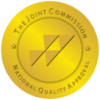Party Drug Addiction Treatment
Drug addiction isn’t limited to looking any one particular way. Some people are addicted to substances as common as alcohol; others are addicted to substances as hard as fentanyl. Most individuals who get involved with the party scene become addicted to particular kinds of drugs as well. Party drugs are a hot commodity amongst ragers far and wide (although their use isn’t limited to parties).
No matter how these party drugs are introduced to a person, it’s difficult to stop once you’ve started. However, just because it’s difficult to treat party drug addiction doesn’t mean it’s impossible. Northern Illinois Recovery Center specializes in treating the most difficult of addictions. We offer a wide variety of programs and resources to help those struggling with addiction to party drugs.
Jump to Section
Treatment at Northern Illinois Recovery Center

At NIRC, our drug addiction rehab in Illinois provides a complete continuum of care. Party drug addiction has proven devastating for many individual’s lives. We can help with detox, inpatient care, outpatient care, and aftercare at our facility. If you or a loved one are dealing with addiction, party drugs, or others, please reach out to us today.
What are Party Drugs?
Party drugs, also known as club drugs or designer drugs, refer to a category of substances typically used recreationally for their psychoactive effects. Common examples include ecstasy (MDMA), GHB, ketamine, and Rohypnol. These substances are often associated with nightclubs, concerts, or parties, hence the name. It’s important to highlight the risks involved with their use, which can include addiction, severe health consequences, and legal issues.
Party drugs can be classified into three main categories: stimulants, hallucinogens, and depressants. Stimulants such as ecstasy and cocaine increase energy, alertness, and euphoria. They are often used to enhance the party experience by increasing feelings of sociability and reducing inhibitions. The use of party drugs has become increasingly popular in recent years, especially among young adults. They are often portrayed as harmless and fun, but the reality is that they can have serious consequences.
Hallucinogens, like LSD and ketamine, alter perception and can cause hallucinations, intense sensory experiences, and distorted sense of time. These types of drugs are known for their psychedelic effects and can significantly impact a person’s judgment and behavior. Depressants, such as GHB and Rohypnol, slow down the central nervous system, causing relaxation and sedation. They are often used to enhance sexual experiences or to induce sleep, but can also lead to memory loss and blackouts.
What are Examples of Party Drugs?


Some examples of party drugs include the following:
- Marijuana
- Cocaine
- Ecstasy (MDMA or Molly)
- Ketamine
- GHB
- Rohypnol
- Meth
- LSD
Marijuana, also known as cannabis, is a plant-based substance that contains psychoactive compounds. The two main active compounds are THC (tetrahydrocannabinol) and CBD (cannabidiol). THC is responsible for the drug’s psychoactive effects while CBD can have therapeutic effects. Marijuana is consumed in various ways, including smoking, vaporization, or ingestion in the form of edibles. It is used mostly in party settings recreationally.
Cocaine is a powerful and addictive stimulant drug made from the leaves of the coca plant native to South America. It is often used recreationally for its euphoric and energizing effects. However, the use of cocaine can have serious health effects including heart disease, stroke, and even death.
Despite its dangerous effects and legal implications, cocaine has gained infamy as a party drug, primarily due to its stimulant properties. It can temporarily increase energy and alertness, reduce the need for sleep, and create a certain level of euphoria. It’s also perceived to heighten sensory experiences, including sound, color, and touch; these factors that might enhance enjoyment during a party or social gathering.
Molly, also known as MDMA (3,4-Methylenedioxymethamphetamine), is a synthetic, psychoactive drug often associated with the party or rave scene. It is famed for its capacity to induce feelings of euphoria, increased sociability, and heightened sensory awareness. Despite its popularity in certain circles, Molly carries a substantial risk of harm. Physically, it can lead to dehydration, hyperthermia, and even heart or kidney failure in extreme cases. Psychologically, users may experience anxiety, restlessness, irritability, or depression as the effects wear off.
As Molly is often mixed with other substances, users may unknowingly consume dangerous adulterants. The lack of regulation also means the purity and dosage can vary greatly, increasing the risk of overdose. Long-term use can result in persistent cognitive and emotional issues. It is crucial to understand these potential dangers before deciding to use such substances.
Ketamine is a powerful anesthetic and analgesic drug. It is primarily used in veterinary practice and human medicine for its rapid induction and recovery times. Ketamine is known for its dissociative properties, which can cause the user to feel detached from their surroundings or their own body. In recent years, it has gained attention for its potential use in the treatment of severe depression.
Ketamine has a dark side as a substance of abuse. When used recreationally, it can lead to serious health risks. Potential dangers include profound hallucinations, memory problems, high blood pressure, and severe respiratory issues. Moreover, its dissociative effects may result in a user becoming physically incapacitated, putting them at risk for harm or exploitation.
Chronic use can lead to bladder toxicity, causing pain and difficulty with urination. It’s vital to be aware of these dangers and the importance of using this substance responsibly under medical supervision.
Gamma-Hydroxybutyric acid, commonly known as GHB, is a central nervous system depressant that is often used recreationally due to its euphoric and sedative effects. It naturally occurs in small amounts within the human body but has been synthesized for medicinal, illicit, and nefarious uses. While it has limited medical applications in the treatment of narcolepsy and alcohol withdrawal, it has the potential to be misused/abused.
Rohypnol, also known as “roofies,” is a benzodiazepine that has garnered a reputation as a party drug. It is commonly associated with instances of drug-facilitated sexual assault due to its powerful sedative and amnesiac effects. Users often experience drowsiness, loss of motor control, and memory loss, making it a dangerous substance, particularly when mixed with alcohol or other drugs. It’s important to note that the use of Rohypnol is illegal.
Methamphetamine, colloquially known as meth, is a highly potent stimulant that is often abused as a party drug; this is due to its ability to induce feelings of euphoria, heightened energy, and increased focus. However, it’s important to note that meth is highly addictive and illegal; the misuse of this substance can lead to serious health issues. These health issues include memory loss, heart problems, and severe psychological disorders.
LSD, or lysergic acid diethylamide, is a potent hallucinogenic drug often associated with the counterculture of the 1960s. It is derived from ergot, a fungus that grows on grains like rye. When ingested, LSD alters the user’s perception, thoughts, and feelings, often resulting in visual hallucinations and a distorted sense of time. However, its use can also lead to serious mental and physical health risks.
LSD gained notoriety as a party drug in the ’60s. Unlike other substances that might be used to enhance sociability or energy levels, LSD profoundly alters one’s sensory perceptions; this often leading to intense hallucinations that can be overwhelming in a party setting. Furthermore, it can also result in ‘bad trips,’ characterized by intense fear and paranoia. Therefore, while some may use LSD in a party context for its hallucinogenic effects, its unpredictable nature makes it dangerous.
Which Party Drugs are the Most Popular?
When discussing drug use, it’s important to note that this information should not encourage or promote substance misuse. Our goal is to educate and increase awareness. That said, party drugs vary in popularity based on cultural context, geographical location, and user demographic.
Currently, commonly used substances at social gatherings tend to include marijuana, molly, and cocaine. These substances are generally sought after for their psychoactive effects, which may include heightened senses, euphoria, or increased energy. Remember, these substances can have serious health risks and legal implications.
How Does Addiction to Party Drugs Increase the Risk of Health Problems?


Addiction to party drugs escalates health risks in several ways. Prolonged use of these substances can lead to severe physical and mental health issues, such as cardiovascular diseases, liver damage, and cognitive impairment. They can also trigger mental health disorders like anxiety and depression. Additionally, the behavior associated with drug addiction can pose additional health risks, such as the spread of infectious diseases. It is crucial to understand these risks, and provide resources for treatment and recovery when it comes to party drug addiction.
Northern Illinois Recovery Center Offers Treatment for Party Drug Addiction
At Northern Illinois Recovery Center, we provide comprehensive treatment plans for party drug addiction. Our approach is holistic, addressing the physical, mental, and emotional aspects of addiction. Our team of skilled professionals collaborates with patients to create individualized treatment plans; we incorporate a wide range of treatment such as cognitive-behavioral therapy, group therapy, and relapse prevention training. We’re committed to helping our patients navigate their path to recovery, supporting them every step of the way.
Party Drug Addiction is No Party – Northern Illinois is Here to Help
Being addicted to party drugs, ironically, is no party at all. At Northern Illinois Recovery Center, we’re here for you. If you or a loved one need help, contact us today.
Get the help you need at Northern Illinois Recovery!
855.458.1739
Northern Illinois Recovery Addiction Treatment Center


Licensed Physician and Surgeon
Dr. Beth Dunlap, a board-certified addiction medicine and family medicine physician, and is the medical director at Northern Illinois Recovery Center. She is responsible for overseeing all the integrated medical services at both campuses. Beth completed medical school, residency, and fellowship at Northwestern University, where she continues to serve on the faculty as a member of the Department of Family and Community Medicine. She has extensive experience in addiction medicine at all levels of care, and her clinical interests include integrated primary care and addiction medicine, harm reduction, and medication-assisted treatment.



